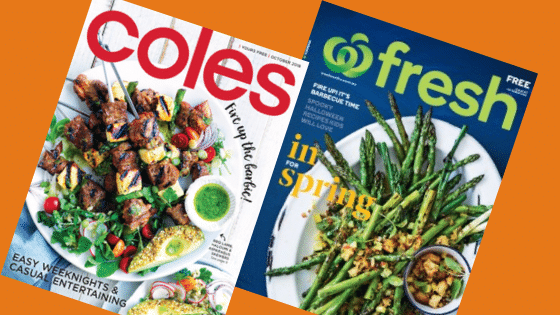It’s a sign of the times. Cosmopolitan, the iconic lifestyle magazine for (mostly) women, will cease publishing in December after 45 years. It joins a long list of magazines considered no longer financially viable. But do brand magazines still work?
Our increasingly digital lives have put paid to traditional publishing – at least that’s the reason usually touted for the life-threatening struggle of magazines. What was once read on paper is now readily available in myriad sites online.
Not so fast. Some mastheads haven’t survived the onslaught of digital media, but others are bucking the trend. Many brands still swear by magazines, which continue to achieve their aim of staying in touch with customers, engaging staff, and driving demand for products.
Magazines can still play an integral role in a brand’s marketing strategy, delivering a tangible link with customers that no other medium has yet subsumed.
Brand magazines for customers
Goals of brand magazines may vary, but building customer loyalty is typically a primary objective. They can help to cross-sell and up-sell, keep people up to date with new product or service developments, and contribute to brand image.
And the strategy goes back further than you might think.
Porsche sold its first sports cars in 1948. By 1952 the company had produced issue one of Christophorus magazine for Porsche owners. It has produced five issues per year ever since, and now boasts a global circulation of 514,000 for its 100-plus-page publication in 11 languages. Issue 388 is currently available.
This is one of many examples – in fact, brand magazines are considered by many to be content marketing in its earliest form!
Most airlines produce regular inflight publications for their passengers. Found in seat pockets, they have the distinct advantage of a captive audience for the duration of flight.
Foxtel produces an 80-page monthly magazine for its subscribers with celebrity interviews, program guides, new show promotions and subscriber exclusives.
Woolworths publishes Fresh magazine, available in its supermarkets and online. It promotes food lines and creates product demand through recipes and stories by well-known chefs and celebrities. Coles publishes Taste magazine for much the same reasons.

Internal brand magazines boost employee engagement
Many brands continue to use print magazines as an internal vehicle for their employees to build team camaraderie and keep them up to date with developments.
Aon Hewitt’s 2018 Trends in Global Employee Engagement defines employee engagement as “the level of an employee’s psychological investment in their organisation”. In its report, Rewards & Recognition are again the “strongest drivers of engagement”.
In its conclusion the report noted, “People are also emotional and fickle. They want to be won over. That is why employee engagement can be an organisation’s great differentiator in times of stability or in times of rapid change. When you have a culture of engagement, your competitors had better take notice.”
It may come as a surprise to some executives that many of their workers are not very engaged with their job or workplace, and struggle to motivate themselves to get through a working day.
Gallup conducted a 142-country study on the State of the Global Workplace. It found that 60% of Australian employees are “not engaged … they lack motivation and are less likely to invest discretionary effort in organisational goals or outcomes”. And 16% are “actively disengaged”. Thank goodness Australian workplaces don’t have a habit of singing the corporate song each morning…
So why not just send an email newsletter to employees? Is it worth the effort of producing magazines for employees if they aren’t really engaged?
Print magazines work as “engagers” partly because of their tactility, which most people appreciate — it’s a pleasant experience, not just another memo. They can be read on public transport and taken home and read at a more leisurely pace.
Internal brand magazines by their nature provide greater scope to engage with employees than other formats. Each issue could contain stories about employees who have achieved goals in their personal lives, and profile senior managers outside office hours. This type of content can help to break down communication barriers and show the person behind the title.
They can also have corporate calendars of important events and social occasions, profiles of the company’s sports teams, and some social news perhaps covering events like employees’ marriages or babies.

Producing print magazines
A caveat — print magazines take longer to prepare, and cost more to produce. Their content largely requires professional input – writers, editor, designer – to ensure a quality outcome that will be effective.
The result can be a connection that’s personal and eagerly anticipated by customers or staff. It can reflect the importance your business places on those relationships and show that you value their loyalty.
Print magazines heavily reliant on advertising revenue might be faltering, but brand magazines published to connect with customers or engage with staff can still meet the goals of their publishers in the digital age.





